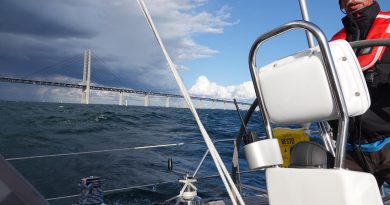RYA-tips #27 – Blue water sailing – introduction
Zeilen is een combinatie van wetenschap en kunst. En voor wie daar meer over wilt weten schrijft Albert De Nijs, instructeur bij de De Zeezeilers van Marken wekelijks een rubriek met tips&trics van de Royal Yachting Association.

While coastal sailing you’re off-grid for maybe 2 days. Then you hook up to shore power, connect to internet, refill water tanks, wait for a weather window and fix items that need attending. That luxury is not available to long distance cruisers. Being far away from a safe haven implies you have to be completely self-supporting. In the next series of articles, we will touch on some of the consequences of this difference.
Just as with everything in life, blue water sailing is about compromises. One side of the spectrum is the high-end option with all possible luxuries and complexities, including all potential for trouble. On the other side are basic specs and simplicity thereby (maybe) skipping on comfort. For most modern luxuries there is an old-fashioned alternative, often with less complexity and less power consumption. It is for you to decide what level of comfort suits you and your crew.
Most ocean crossings take 2-3 weeks, and although weather-routing is improved, crew and boat must be prepared to withstand multi-day gales or even a storm.
The yacht should be structurally sound and well maintained. Traditionally, ocean going yachts were built for comfort over speed. Typical blue water cruisers have a high ballast ratio, deep cockpit, protected rudder, balanced rig, straight spreaders etcetera. These heavy displacement cruisers are not the fastest, but protection from the elements and comfortable motion are more important than speed for longer trips. Nowadays many crossings are made with modern high-volume cruisers. While not specifically designed for ocean sailing, they have proven to be well capable of blue water challenges.
Wear and tear is an issue on any ocean sailing trip. Logging some 3000 nm in 3 weeks puts an enormous amount of stress on mast, spreaders, standing and running rigging and sails. Perform a thorough rig-check and replace worn items. Mid-ocean is the last place where you want a shroud failure. Things will break, so be prepared to spend quite a bit of time fixing items.
Chafe is your enemy, so protect, inspect and maintain those halyards, sheets, sails etcetera. Do a deck-walk twice daily, and check fittings, blocks, sheaves, split-pins, guard rails, the works, and of course the rig itself. Freshening the nip of halyards and sheets every day can prevent a lot of hassle!
Do allow enough time to prepare, both boat and crew, and leave ample time for a proper shake-down trip, including time to fix things. Rushing of into an ocean crossing is not a great idea!
Albert de Nijs, Dutch Offshore Sailing Academy



